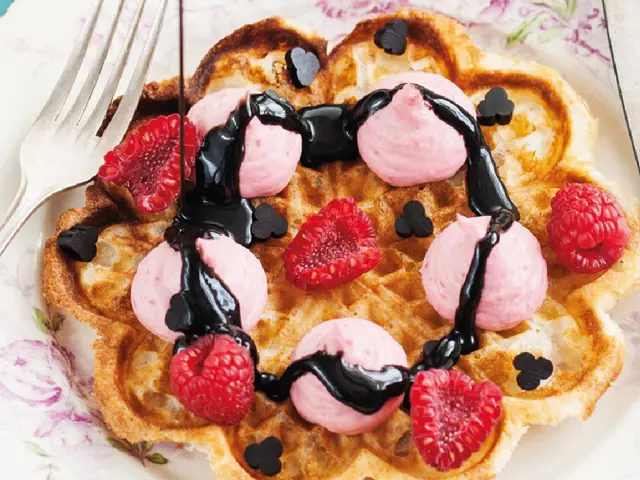


The main culprit for a runny lemon cream topping is too much heat – that’s why we use a water bath to evenly heat the mixture instead of placing it directly on the stove. Make sure you don’t overheat the filling or your lemon pie topping could prove stubborn. If that still doesn’t make a difference, try adding slightly more cornstarch to the mixture.
This recipe uses a lemon cream that sets relatively quickly. Once the pie has been removed from the oven, leave it on a cooling rack until the mould is completely cool.
While none of the ingredients in this recipe naturally contain gluten, pay attention to the cornstarch you use. Some brands of cornstarch are not 100 percent pure and therefore not gluten free due to cross-contamination in the manufacturing process: double check the label to be sure.
If space in your refrigerator is limited then it’s fine to leave this pie out overnight at room temperature, but as the recipe contains dairy and egg, any longer creates the risk of bacteria forming, making the pie unsafe to eat.
There is no dessert that fits better for a warm day than a fresh, zesty lemon pie, and that helps explain its longevity since first being concocted as early as the 1700s. The lemon curd (or custard as it was known originally) that tops the pies was first created in England during the 18th century, before travelling to the Americas, France and beyond soon after.
After going to the effort of making the lemon pie it can be tempting to skip on the accompaniments, but we promise it’s worth it. The fatty, round taste of the whipped cream is a perfect contrast to the sharpness of the lemon topping – combined they’ll take your dessert to the next level.
Pairing a slice of fresh lemon pie with a strong cup of coffee or dark tea is a simple, rewarding pleasure that will make your break from a busy day feel even more rewarding. A cold drink like a soda is equally satisfying with this summer-themed sweet treat – there’s a reason a slice of lemon goes will with a cold Coke, after all.
We’d argue this lemon pie shines best when cool, but it can be kept at room temperature for up to a day. Otherwise, cover it, refrigerate and the pie will keep for up to three days. Freezing is the way to go for longer-term storage: either cut into portions or freeze whole, carefully wrapping the tart before you freeze it.

Fall in love with pasta all over again, as you serve your loved ones creamy dishes made richer with Puck—and your special touch. Our inspiring recipes, general guidelines, and detailed articles will set you on the path to culinary creativity. With Puck’s entire range of cooking creams and sauces that meet your high standards, you’ll love putting your personal spin on pasta.